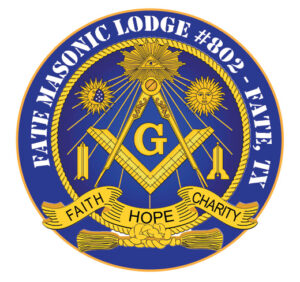
The origins of Freemasonry are a topic of ongoing historical debate, but the most widely accepted theory traces its roots to medieval stonemasons’ guilds. These guilds were associations of skilled craftsmen who built the magnificent cathedrals and castles of Europe. Over time, these guilds evolved into the modern Masonic lodges we know today.
Here’s a breakdown of how these guilds is believed to have evolved into modern Masonic lodges:
Medieval Guilds
The origins of Freemasonry can be traced back to the medieval stonemason guilds in Europe. These guilds were responsible for the construction of significant architectural works and developed secret signs and rituals to protect their trade knowledge.
When demand for stonemasons declined, some lodges began to accept honorary members who were not craftsmen. This marked the beginning of the transition from operative (working) masons to speculative (symbolic) masons (“non-operative” or “speculative”). These were often gentlemen, scholars, and other prominent figures who were interested in the guild’s principles and fellowship. This shift marked the transition from operative masonry (practical building) to speculative masonry (moral and philosophical development). The tools and techniques of stonemasonry began to be used symbolically, to teach moral lessons and philosophical truths.
Key Historical Events
Regius Poem (1390): The oldest known Masonic document, the Regius Poem, describes a code of conduct for masons and illustrates the link between stonemason guilds and early Masonic practices.
https://www.freemasonry.bcy.ca/texts/regius.html?form=MG0AV3
Elias Ashmole’s Initiation (1646): Elias Ashmole, an English antiquary and historian, recorded his initiation into a Masonic lodge in Warrington, England. This is one of the earliest known records of a speculative Mason.
https://www.thesquaremagazine.com/mag/article/202110elias-ashmole
Formation of the Grand Lodge of England (1717)
On June 24, 1717, four existing lodges formed the Grand Lodge of England in London, marking the official start of modern Freemasonry. Duke of Montagu’s Election (1721): The Duke of Montagu was elected as Grand Master, lending prestige and credibility to the Grand Lodge of England and helping to attract more members from the nobility and gentry.
The 1723 Constitutions of “The Constitutions of the Free-Masons” by James Anderson in 1723, was also a very important event. This document laid out
The “Antients” and “Moderns“: Later in the 18th century, a rivalry emerged between two Grand Lodges in England: the “Antients” and the “Moderns.” This period was marked by differences in rituals and practices. The two Grand Lodges In 1813 the United Grand Lodge of England, which is the governing body for many Masonic lodges worldwide.
The Old Charges
Documents known as the “Old Charges,” dating back to the 14th century, provide evidence of early Masonic practices. These documents contain regulations for the craft, as well as legendary histories of masonry.
Freemasonry’s journey from medieval guilds to modern lodges is a testament to its enduring principles of brotherhood, charity, and moral development. If you have any more questions or want to dive deeper into any specific aspect, feel free to ask!
Freemasonry evolved from medieval stonemason guilds that prized technical skill and secrecy into modern lodges focused on moral philosophy, personal growth, and intellectual discourse. This evolution was shaped by key historical events and cultural movements, such as the Renaissance, the Enlightenment, and the political changes of the early modern period. Together, these factors transformed a practical craft into a rich tradition of symbolism and ethics that continues to intrigue and inspire today.
Key Historical Influences
Several historical events and broader cultural shifts played critical roles in shaping early Freemasonry:
- The Renaissance: The revival of art, science, and humanistic thought during the Renaissance encouraged intellectual curiosity and a reevaluation of traditional ideas. This environment helped foster a culture where secret societies, including the speculative lodges, could flourish.
- The Enlightenment: The Enlightenment’s emphasis on reason, individualism, and the questioning of authority dovetailed with Masonic ideals. The lodges became spaces where progressive ideas were exchanged, influencing discussions on democracy, science, and human rights.
- Political and Social Turbulence: The upheavals of the Reformation and subsequent political changes in Europe provided a backdrop where secretive societies could act as safe havens for dissenting opinions and alternative ideologies. Freemasonry’s structure, with its emphasis on equality among members, appealed to those seeking reform and social progress.
Evolution of Symbols and Rituals
The rich symbolism used by Freemasons—such as the square and compass, the all-seeing eye, and references to the building of Solomon’s Temple—stems from the tools and practices of medieval stonemasons. As these symbols transitioned into a speculative context, they were imbued with new meanings that reflected broader philosophical questions about morality, virtue, and the nature of human society.
From Operative to Speculative
By the 16th and 17th centuries, as the demand for cathedral building declined and the construction industry modernized, these stonemason guilds began to accept non-operative members—gentlemen and intellectuals who were attracted to the rich symbolism and philosophical ideals of the craft. This transition from operative (working stonemasons) to speculative (philosophical and social) Freemasonry marked a significant shift. The speculative lodges started to focus more on moral and ethical teachings, personal improvement, and the pursuit of enlightenment ideals, rather than merely the practical aspects of building.

